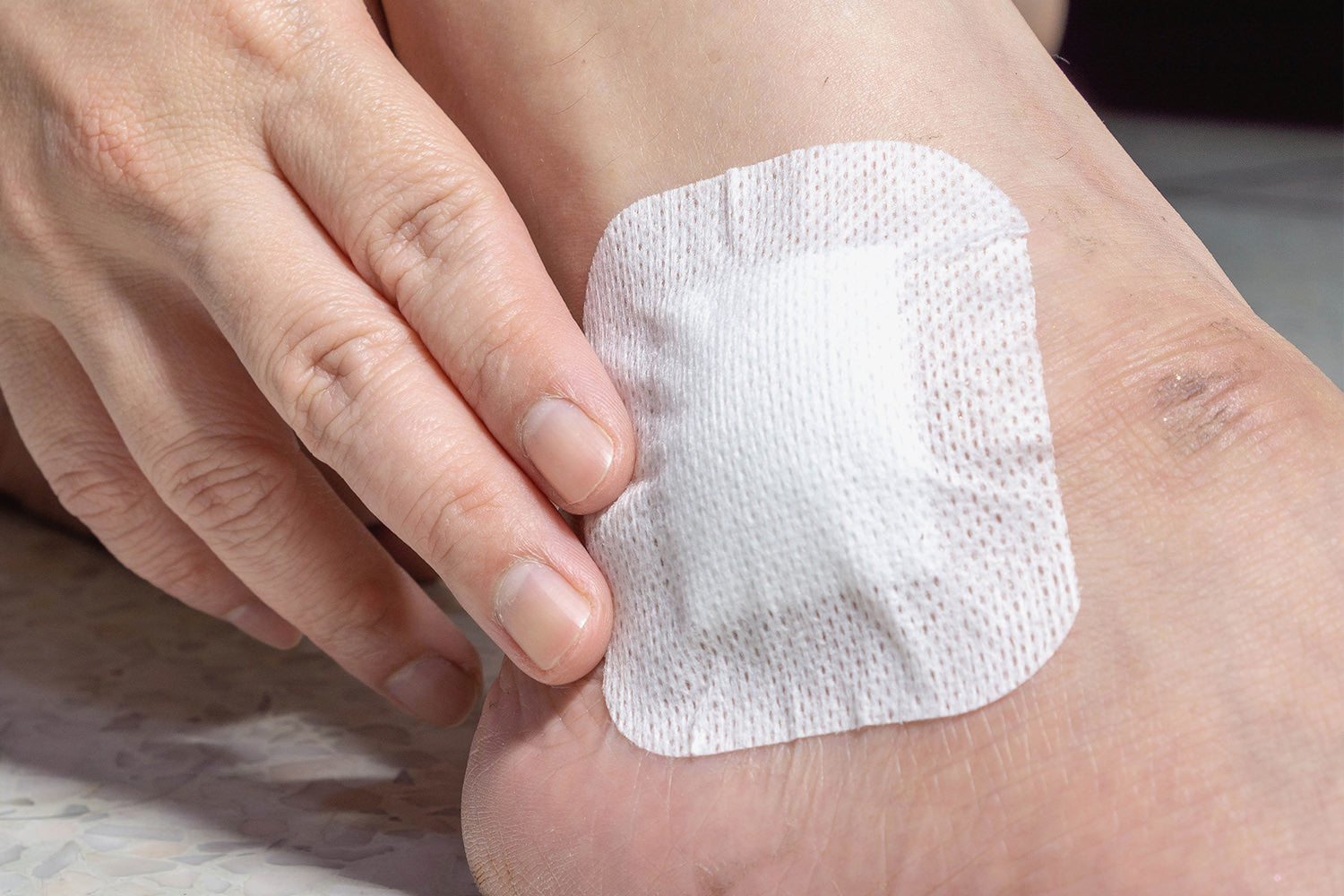Introduction
Wound care can be complicated. As anyone who’s dealt with multi-stage wounds knows, healing isn't always linear. A single wound may go through multiple stages, each requiring different care. In fact, one of the biggest challenges healthcare professionals face is finding the right dressing that can adapt as the wound progresses.
That’s where composite dressings come in. These advanced wound care solutions can handle a wide variety of wounds, offering flexibility and comfort for patients at every stage of healing. In this article, we’ll explore why composite dressings, specifically CellEra's Vitale Composite Dressings, are a perfect fit for managing multi-stage wounds.
Here's what you'll learn:
-
What multi-stage wounds are and why they’re tricky to treat
-
The benefits of composite dressings in multi-stage wound care
-
Why CellEra's composite dressings are a top choice for professionals
-
A step-by-step guide to applying composite dressings for the best results
-
Real-life examples of how composite dressings have made a difference
By the end of this article, you'll have a solid understanding of how composite dressings can simplify wound care, speed up healing, and keep your patients comfortable throughout the process.

What Are Multi-Stage Wounds?
Multi-stage wounds are exactly what they sound like: wounds that go through different stages of healing. These stages typically include:
-
Inflammatory Stage (Stage I): This is the initial phase when the body starts to fight off infection and control bleeding. It can be painful and swollen.
-
Proliferative Stage (Stage II): During this phase, new tissue forms to close the wound. This is when tissue regeneration occurs, and new blood vessels form.
-
Maturation Stage (Stage III): This is the final stage of healing where the tissue strengthens and matures, but the wound may still need protection during this time.
The challenge with multi-stage wounds is that they often require different types of care at each stage. What works for a wound during one phase may not be appropriate for the next. For example, while you need a highly absorbent dressing during the inflammatory stage, the proliferative stage may require a more breathable dressing that encourages tissue growth.
That’s where composite dressings come in. Designed to adapt as a wound progresses, composite dressings offer a combination of absorbency, moisture control, and barrier protection—exactly what you need at every stage.
Why Choose Composite Dressings for Multi-Stage Wounds?
Composite dressings are like the Swiss army knives of wound care. They’re versatile, durable, and tailored to handle complex healing needs. Let’s take a closer look at why composite dressings, like CellEra's Vitale Composite Dressings, are perfect for multi-stage wounds.
1. Versatility Across Multiple Stages of Healing
Unlike traditional single-layer dressings, composite dressings combine multiple layers designed to perform different functions. For example, they may have:
-
A moisture-wicking layer that draws excess fluid away from the wound, which is essential in the inflammatory stage.
-
A semi-permeable barrier layer that protects the wound from bacteria and pathogens, which is important in the proliferative stage when new tissue is forming.
-
A comfortable outer layer that provides cushioning and protection, perfect for the maturation stage.
This versatility makes composite dressings an ideal choice for multi-stage wound care, as they provide the right protection at every step of the healing process.
2. Moisture Balance for Optimal Healing
Managing moisture is a critical part of wound healing. Too much moisture can lead to maceration, where the skin becomes softened and prone to infection, while too little moisture can delay healing.
CellEra’s Vitale Composite Dressings are designed to create an optimal moisture environment. The dressing’s absorbent layers keep the wound moist but not overly saturated, promoting faster tissue regeneration and reducing the risk of infection.
3. Protection from Infection
During all stages of healing, wounds are vulnerable to infection. Vitale Composite Dressings have antimicrobial properties, which act as a protective barrier against harmful bacteria and pathogens, ensuring that the wound is kept clean and free from infection.
This is particularly important in multi-stage wounds, where the risk of infection increases as the wound is exposed to external contaminants during the healing process.
4. Comfort and Patient Satisfaction
When dealing with complex wounds, comfort is a top priority. Vitale Composite Dressings are designed to be gentle on the skin while offering excellent adhesion and cushioning. This makes them a perfect option for patients who may be bedridden or experiencing prolonged healing times.
Plus, because composite dressings are less likely to adhere to the wound bed, they reduce the pain and discomfort that often comes with dressing changes, leading to better patient compliance.
5. Easy Application and Removal
Traditional dressings can be challenging to apply and remove, especially for multi-stage wounds that require different types of care over time. Fortunately, Vitale Composite Dressings are easy to apply and remove, minimizing the trauma to the wound site. This is essential for maintaining the integrity of newly-formed tissue, reducing the risk of damaging the wound during dressing changes.

How to Apply Vitale Composite Dressings
Proper application of Vitale Composite Dressings is essential for achieving the best healing results. Here’s a simple step-by-step guide to ensure you're using them effectively:
Step 1: Prepare the Wound Site
Before applying any dressing, make sure the wound is clean and dry. Gently clean the area with saline solution or an appropriate wound cleanser, and pat it dry with a sterile gauze pad.
Step 2: Apply the Composite Dressing
-
Open the sterile packaging of the Vitale Composite Dressing.
-
Place the dressing over the wound bed, ensuring it fully covers the area.
-
If necessary, trim the dressing to fit the shape of the wound, but avoid cutting into the dressing’s absorbent layers.
Step 3: Secure the Dressing
Once the dressing is in place, secure it using the adhesive borders or a secondary dressing, if needed. Make sure the dressing fits snugly but isn’t too tight, as this could affect circulation.
Step 4: Monitor the Wound
After applying the dressing, monitor the wound for any signs of infection or complications. The Vitale Composite Dressing is designed to manage exudate, but it’s still essential to check the wound regularly.
Step 5: Change the Dressing as Needed
Follow the instructions provided with the dressing regarding how often to change it. Typically, Vitale Composite Dressings can be left in place for several days, depending on the level of exudate. Always consult with a healthcare professional to determine the best dressing change schedule for your patient’s needs.
Real-Life Examples of Success with Composite Dressings
When it comes to wound care, real-life stories can offer some of the most compelling evidence of how effective composite dressings can be. Here are a couple of examples that showcase the success of Vitale Composite Dressings:
Example 1: Pressure Ulcer Healing in a Bedridden Patient
One of our healthcare clients used Vitale Composite Dressings to treat a patient with a stage III pressure ulcer. The patient had been bedridden for an extended period, and the wound was showing little improvement with traditional dressings.
After switching to Vitale Composite Dressings, the wound began to show significant signs of healing. The dressing’s superior moisture balance helped to reduce maceration, and the antimicrobial layer kept the wound free from infection. Within weeks, the wound had progressed from stage III to stage II, and the patient experienced far less discomfort during dressing changes.
Example 2: Diabetic Foot Ulcer Recovery
Another success story comes from a patient with a chronic diabetic foot ulcer that had been present for several months. The wound was in the proliferative phase, but healing had stalled.
By using Vitale Composite Dressings, the wound received the optimal moisture environment it needed to heal. The dressing’s multi-layer design helped to promote tissue regeneration while protecting the wound from infection. Within a few weeks, the patient’s foot ulcer had significantly improved, and they were able to return to their daily activities without discomfort.

Why CellEra's Composite Dressings Are Trusted by Healthcare Professionals
At CellEra, we believe that quality matters, especially when it comes to wound care. Our Vitale Composite Dressings are trusted by healthcare providers across the country because they are effective, reliable, and provide superior protection for multi-stage wounds.
We adhere to the highest industry standards and ensure that each dressing is designed with both patient and healthcare professional in mind. Whether you’re treating a chronic wound, post-surgical site, or pressure ulcer, CellEra’s composite dressings are your go-to solution for faster, more comfortable healing.
Conclusion
Vitale Composite Dressings are a game-changer for treating multi-stage wounds. Their versatility, moisture balance, infection prevention, and patient comfort make them the ideal choice for healthcare professionals and caregivers alike. At CellEra, we are committed to providing the best possible solutions for wound care, and our Vitale Composite Dressings are a testament to that.
If you want to give your patients the best chance at faster healing and more comfortable care, Vitale Composite Dressings are the way to go. Visit our website today to learn more about how our products can help improve your wound care practices.
FAQ Section
| Question | Answer |
|---|---|
| What are composite dressings used for? | Composite dressings are used to manage a wide range of wounds, including chronic, surgical, and pressure ulcers, by providing moisture control and protection. |
| How do composite dressings help with multi-stage wounds? | Composite dressings offer multiple layers that provide optimal moisture balance, infection control, and comfort across different stages of wound healing. |
| Can composite dressings be used for diabetic foot ulcers? | Yes, composite dressings like Vitale Composite Dressings are excellent for managing diabetic foot ulcers by creating a moist wound healing environment and preventing infection. |
| How often should composite dressings be changed? | The frequency of changing composite dressings depends on the level of exudate and the stage of the wound, but typically they can stay in place for several days. |
| Are CellEra's composite dressings suitable for sensitive skin? | Yes, Vitale Composite Dressings are designed to be gentle on sensitive skin, making them ideal for patients with fragile skin or those who are bedridden. |
| Can composite dressings be used for surgical wounds? | Yes, composite dressings are widely used for post-surgical wound care, offering protection and promoting healing through all stages. |
| What is the best dressing for a chronic wound? | Vitale Composite Dressings are an excellent choice for chronic wounds as they offer moisture balance and antimicrobial protection, which are essential for long-term healing. |
| How do I know if a composite dressing is working? | Look for signs of healing, such as reduced pain, decreased exudate, and a cleaner wound bed. Regularly inspect the wound for signs of infection. |
| Are composite dressings available for large wounds? | Yes, composite dressings come in various sizes to accommodate wounds of all sizes. |
| Where can I buy Vitale Composite Dressings? | You can purchase Vitale Composite Dressings directly from our website here. |
Disclaimer: This webpage is designed for general information only. The information presented at this site should not be construed to be formal medical advice nor some medical procedures. Results will vary.





Share:
How to Choose a Medical-Grade Moisture Barrier for Bed Sore Prevention